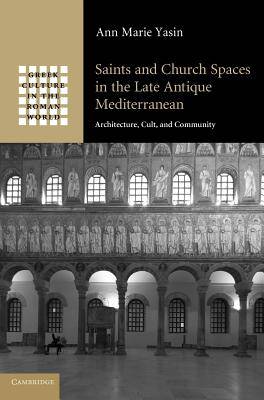
- Afhalen na 1 uur in een winkel met voorraad
- Gratis thuislevering in België vanaf € 30
- Ruim aanbod met 7 miljoen producten
- Afhalen na 1 uur in een winkel met voorraad
- Gratis thuislevering in België vanaf € 30
- Ruim aanbod met 7 miljoen producten
Zoeken
Saints and Church Spaces in the Late Antique Mediterranean
Architecture, Cult, and Community
Ann Marie Yasin
€ 194,95
+ 389 punten
Uitvoering
Omschrijving
This book explores the intersection between two key developments of the fourth through seventh centuries CE: the construction of monumental churches and the veneration of saints. While Christian sacred topography is usually interpreted in narrowly religious terms as points of contact with holy places and people, this book considers church buildings as spatial environments in which a range of social 'work' happened. It draws on approaches developed in the fields of anthropology, ritual studies, and social geography to examine, for example, how church buildings facilitated commemoration of the community's dead, establishment of a shared historical past, and communication with the divine. Surveying evidence for the introduction of saints into liturgical performance and the architectural and decorative programs of churches, this analysis explains how saints helped to bolster the boundaries of church space, reinforce local social and religious hierarchies, and negotiate the community's place within larger regional and cosmic networks.
Specificaties
Betrokkenen
- Auteur(s):
- Uitgeverij:
Inhoud
- Aantal bladzijden:
- 362
- Taal:
- Engels
- Reeks:
Eigenschappen
- Productcode (EAN):
- 9780521767835
- Verschijningsdatum:
- 30/11/2009
- Uitvoering:
- Hardcover
- Formaat:
- Genaaid
- Afmetingen:
- 175 mm x 249 mm
- Gewicht:
- 771 g

Alleen bij Standaard Boekhandel
+ 389 punten op je klantenkaart van Standaard Boekhandel
Beoordelingen
We publiceren alleen reviews die voldoen aan de voorwaarden voor reviews. Bekijk onze voorwaarden voor reviews.











